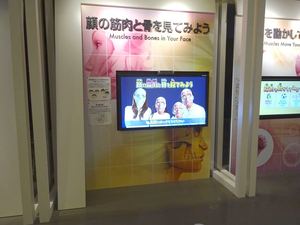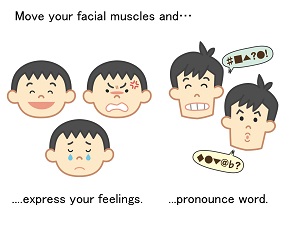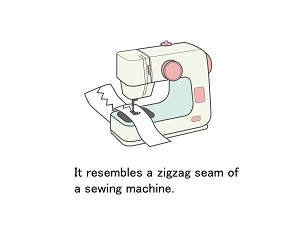Nagoya City Science Museum
TOP > Exhibition Guide > Floor Map> Muscles and Bones in Your Face
Muscles and Bones in Your Face



Purpose of Exhibition
Stand in the front of the screen, and you will see the bones and muscles in your face. This computer graphic model of your facial bones and muscles projected on the screen moves with changes in facial expression.
Change your facial expression in various ways and shake your head. A virtual image of your lower jaw and the muscles around your eyes, eyebrows and mouth will also move in accordance with your movements. Change the angle of your face, and you will be able to view your facial bones and muscles from a different angle.
To view your facial bones and muscles, please stand on the footprints on the floor and adjust your face position to ensure that your entire face appears on the screen.
Additional Knowledge
[Facial muscles]
The muscles of the face and head are not so long. The muscles around the mouth and eyes are complex in structure; some muscle fibers look like annual tree rings, and others run diagonally in different directions.
The superficial muscles of the face are also called “mimic muscles,” which feature complex motions.
Why do the facial muscles perform complex movements? Their complex movements enable the creation of various facial expressions to convey the emotional state of an individual to others. These motions also play a role in slightly changing pronunciation to utter many words, thus enabling people to convey complex information.
[Bones of the skull]
Take a close look at the skull of an adult, and you will find zigzagging lines on the skull where bones meet. In babies, the various bones of the skull are small and do not join up completely, leaving some gap, which makes it easier for them to squeeze through the birth canal. The gap is gradually closed as the baby grows older.
Article by Tomoko Horiuchi, curator
